Download operating system
for your personal computer.
Versions before Windows NT
Developer: Microsoft
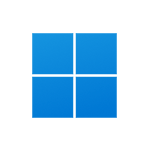
Windows 11
Developer: Microsoft
Introducing Windows 11, a new Windows experience that brings you closer to the people and things you love.
Windows 11 provides a cool and creative space where you can pursue your passion through a new experience. From a rejuvenated Start menu to new ways to connect with your favorite people, news, games and content, Windows 11 is the place to think, express and create naturally.
Easily access all the apps you need and multi-task with tools like Snap Layouts, Desktops, and a new more intuitive redocking experience.
Connect with the people you care about instantly with Microsoft Teams, right from your desktop. Call or chat for free—whatever device they are on.
With Microsoft Edge and the many widgets you can choose from, you can quickly stay up-to-date with the news, information, and entertainment that matter most to you. Easily find the apps you need and shows you love to watch in the new Microsoft Store.
Windows 11 takes gaming to a whole new level with graphic capabilities that rival reality. Find your next favorite game with Xbox GamePass, which gives you access to over 100 high-quality games.
The new Windows is available on a wide range of devices from our partners, bringing you the latest innovations in touch, pen and voice, making it easy to find the best, most affordable device for you.
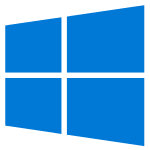
Windows 10
Developer: Microsoft
Windows 10 (the successor to Windows 8 / 8.1) was released for the first time to public on July 29, 2015, it was available for many device platforms like desktop / laptop PC, smartphone, tablet etc., and it uses the same software ecosystem in all platforms. Windows 10 is an operating system as a service for consumers and businesses. According to Microsoft, Windows 10 is based on 'software as a service' model in which the operating system receives ongoing updates rather than issuing a full new version. Windows 10 introduces Universal Windows Platform, a platform on which developed apps can work in all Windows 10 devices. In Windows 8, Universal Applications work in fullscreen, while in Windows 10, those apps work as normal software applications in a normal window.
The Windows 7-like start menu is back in the Windows 10, with app tiles like Windows 8 / 8.1. Users can change the start menu size to either full screen or small size. All types of applications can be snapped on the screen, which lets you work together. The taskbar has a task view icon that allows you to easily switch to different open apps, or create a new virtual desktop. Windows 10 includes two user interface (UI) modes, one is optimized for devices with keyboard and mouse, and the other is for a touch screen device.
Microsoft introduced several new features and applications in Windows 10's first release such as Microsoft Edge Browser, Cortana Virtual Assistant, Universal Windows Platform, New Start Menu, Task View and Virtual Desktops, DirectX 12, Game bar, Multi-factor user authentication, Snap Assist, Notification centre, and more.
Windows 10 is available in many different editions, for home PCs, you can download a Home or Pro version, and for business computers you can install the Enterprise Edition, and in academic institutions you can use the Education edition of the operating system. Brief information about each PC edition of Windows 10 is given below:
Home - The Home Edition is the basic version of the operating system, designed for home PC users, and available for PC and tablet devices. It has all the new notable Windows 10 features such as Cortana Virtual Assistant, Edge Browser, Mobile Management Facility, Virtual Desktops in Task View, etc., while going for features like BitLocker, Windows, DirectAccess, not available in the Home version. The 32-bit version of the Home Edition supports up to 4 GB RAM, and the 64-bit version supports 128 GB RAM.
Pro - The Pro Edition is designed for home PC users, professionals, and small businesses, and is available for PC and tablet devices. It includes all the features of Home Edition, and more like BitLocker, Joining Windows domain, Hyper-V, Windows To Go, and more business features are included. The 64-bit version of the Pro edition supports 2 TB RAM in the system.
Enterprise - Enterprise Edition features most of all editions in terms of features, security, and hardware / software support. It is available for Microsoft Volume Licensing customers, and is designed for the use in small and large organizations. It includes all the features of the PRO version, and includes more business-oriented features like AppLocker, Microsoft Application Virtualization, Device Guard, DirectAccess, and more. The 64-bit version of Enterprise Edition supports up to 2 TB RAM.
Education - Education Edition is designed for educational institutions (for example, schools, colleges, etc.), it is available for institutions that own the Microsoft Academy Volume License. In terms of features and hardware / software support, it includes all the features of the PRO version, and is similar to the Enterprise Edition.
Windows 10 Version history (PC)
() contain year of release.
- Windows 10 21H1 (2021)
- Windows 10 20H2 (2020)
- Windows 10 2004 (2020)
- Windows 10 1909 (2019).
- Windows 10 1903 (2019).
- Windows 10 1809 (2018).
- Windows 10 1803 (2018).
- Windows 10 1709 (2017).
- Windows 10 1703 (2017).
- Windows 10 1607 (2016).
- Windows 10 1511 (2015).
- Windows 10 1507 (2015).
Features
- Snap applications on the screen and work together.
- Tasks view in the taskbar.
- Virtual desktop.
- Microsoft Edge Browser.
- Cortana Virtual Assistant.
- Universal Windows Platform.
- Paint 3D app.
- Windows Mixed Reality.
- Microsoft Fluent Design Implementation.
- Dark mode in file explorer.
- A new phone management application.
- Snip and Sketch Screenshot Tool.
- Game Bar tool.
- Dark and Light Theme.
- Windows Subsystem for Linux (WSL).
- Password-less sign-in
* All the above features available in the latest version.
Facts
- Windows 10 is called the last version of Windows by Microsoft.
- Windows 10 is based on the 'Software as a Software' model in which the operating system receives continuous updates instead of releasing a full new version.
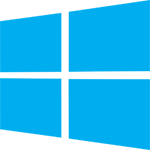
Windows 8.1
Developer: Microsoft
Windows 8.1 (successor to Windows 8) was released to the public on October 17, 2013, it was available as an update for Windows 8 customers, or users who do not have a Windows 8 license can download standalone ISO file for clean installation in their PC. Changes and enhancements to software are major differences in Windows 8.1 (compraing with 8), there are not many new features. The deleted start button in Windows 8 was restored in the taskbar, the start screen gets better with new customization options, more default UWP apps are bundled, more apps can be snaped in the screen, and many more changes are included in Windows 8.1.
Microsoft has released an update for Windows 8.1 in April 2014, which includes many new features like UWP apps can now be able to pin to the taskbar, the title bar is available in the UWP app, right-click menu is available for apps listed in the Start Screen etc., the updated version ISO of Windows 8.1 is available separately in the download menu.
Features
- Restoration of start button on taskbar.
- Start screen improvements.
- Internet Explorer 11.
- OneDrive Integration.
Facts
- Windows 8.1 received more positive reviews than Windows 8.

Windows 8
Developer: Microsoft
Windows 8 (the successor to Windows 7) was released to the public on October 26, 2012, with a new redesigned user interface that makes it easy to use Windows on tablets and touchscreen devices. The new interface for the operating system was based on Microsoft's 'Metro' design language, which was later continued unchanged in Windows 8.1 and 10. In Windows 8, the Start button was removed from the taskbar, and a new charms bar was added to the right side of the screen. A new start screen was added by changing the Start menu, which includes a list of app tiles with live update option. Microsoft has introduced universal Windows platform apps that are built on the new Windows Runtime (WinRT) library. Universal Windows apps are available in the new Microsoft Store, the Store is pre-installed in the OS. By default, many UWP applications are pre-installed with Windows 8 such as Mail, Messaging, Calendar, Music, Video, Weather, PC settings, and People. All Windows 8 editions are capable of using multilingual user-interface.
Windows 8 includes many changes and new features, see below:
Windows 8 changes / updates (compared to Windows 7): Metro design UI, Windows Explorer renamed to File Explorer, File History, Task Manager redesigned with new features, PIN and picture password for users, search get better, new Windows Notification types, touch optimized on-screen keyboard, Internet Explorer 10, updated version of Windows Defender, and many more improvements in networking, performance and hardware support.
New features added in Windows 8 (compared to Windows 7): Universal Windows apps, new lock screen, Windows To Go, Start Screen with live tiles, Secure boot, USB 3.0 full suport, Windows refresh / reset option, Microsoft account integration for login and sync, SmartScreen, Storage Spaces, etc.
Windows 8 usually has three different editions, which are Windows 8 (Core), Windows 8 Pro, and Windows 8 Enterprise. 32 and 64-bit versions are avaialble of all editions.
Features
- Metro Design UI.
- Graphical interface friendly with touch screen device.
- The new charm bar on the right side of the screen.
- Start Screen instead of start menu.
- Universal Windows Platform.
- PIN and picture password for users.
- New lock screen.
Facts
- The removal of the start menu / start button is called the worst change in Windows 8.
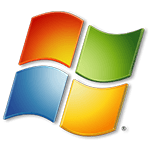
Windows 7
Developer: Microsoft
Windows 7 (the successor to Windows Vista) was released to the public on October 22, 2009, and was more successful than Windows Vista. The graphical user interface of Windows 7 is similar to Windows Vista, glass-like interface design (known as Windows Aero) is available in all versions of Windows 7 (except the Starter Edition). Compared to the earlier version, many new features have been added to the user interface, such that the taskbar can now pin the app, users can use the photo slideshow as a desktop wallpaper, redesign of Windows Explorer and Notification area, new jump list menu when right-click in the taskbar app, new keyboard shortcuts to control UI elements, new Window management features, and much more.
There are some new features and functionality available in Windows 7 that are not available in Windows Vista such as, Libraries in Winidows Explorer, Multi-Touch enabled, app work progress in taskbar, Devices and Printers in control panel, Device Stage, easy dual monitor setup, home group , Microsoft Virtual PC, VHD (Virtual Hard Disk) file format support, and many improvements in performance and hardware support. Your favorite pre-installed apps like Internet Explorer, Windows Media Player and Windows Media Center come with the latest version in Windows 7.
Windows 7 overall more stable, secure, and improved version of Vista. There are 6 different editions of Windows 7, which are Starter, Home Basic, Home Premium, Professional, Enterprise and Ultimate. Except the Starter, all versions are available for 32 and 64-bit capable systems. A service pack and platform update was issued by Microsoft for Windows 7. Both service pack and platform update include hardware / software support improvements, while the platform update include new version of IE browser, Internet Explorer 10.
Features
- More stable, secure and better version of Windows Vista.
- Improved Windows Aero graphical user interface.
- Better boot performance.
- Lots of visual chnages in the taskbar.
- Windows 7 app live thumbnail in taskbar.
- Action Center.
- Performance and security improvements.
Facts
- As of July 2012, more than 630 million Windows 7 licenses have been sold worldwide.
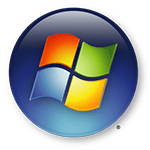
Windows Vista
Developer: Microsoft
Windows Vista (the successor to Windows XP) was first released to the public on January 30, 2007. The graphical interface of Windows Vista was heavily modified with those small UI components like checkboxes, input fields, loaders and radio buttons. In addition to this there are many more new graphical changes such as a new user interface included called 'Windows Aero', redesign of OS interface with glass-like design, windows Flip 3D effect, live thumbnail, and more animations. The most notable components of Windows Shell are updated, like the Start Menu, Windows Explorer and Taskbar, along with new features and designs. Search in Windows Vista allows users to search files and folders faster with instant search results.
Compared to Windows XP, there are several new features and programs in Windows Vista, such as Backup and Restore Utility, Windows Desktop Gadgets, Microsoft's Mail Application, Default App Option, Desktop Window Manager, Multilingual User Interface, New Fonts, System Performance and Security Improvements.
There are 6 variants of Windows Vista for personal and business use, which are Starter, Home Basic, Home Premium, Business, Ultimate and Enterprise. All versions (except Starter) are available for 32 and 64 bit enabled PCs.
Starter - This is light version of Windows Vista compared to all other editions, and it was specially designed for low end computers. The only 32-bit version of Starter Edition is available, while all other Vista editions come for both 32 and 64-bit capable personal computers. Windows Vista Starter Edition is limited to 1 GB RAM and up to 3 applications can run at one time. Vista's most notable features such as the Windows Aero interface, backup and restore components, and multilingual user interface are not available in the Starter Edition.
Home Basic - This edition is available for both 32 and 64 bit platforms, 32 bit version of Home Basic is limited to 4 GB RAM, while the 64 bit version uses up to 8 GB of RAM. Instant search, desktop window manager, and performance improvements are available in this version, while features like Complete PC Backup, Windows Media Center, Windows Aero UI, BitLocker and Multilingual User Interface are not available in the Home Basic.
Home Premium - It supports all the features of Home Basic, the new Aero UI and Windows Media Center. The 32-bit version of Home Premium uses up to 4 GB of RAM, while the 64-bit version is up to 16 GB RAM.
Business - The edition is specifically introduced to business users, and includes all the features of home premium edition. Addtionaly this version includes Complete PC Backup, Remote Desktop Services, Windows Fax and Scan, and IIS service. The 32-bit version of the business edition uses up to 4 GB of RAM, and 64-bit version up to of 128 GB RAM.
Ultimate - This is the highest edition / version of Windows Vista that has more features than all other editions. The 32-bit version of Windows Vista Ultimate uses up to 4 GB of RAM, and 64-bit version up to 128 GB RAM.
Service Pack 1 - Vista SP1 was released on February 4, 2008, it includes improvement in performance, and support for new hardware / software such as Wi-Fi 4 wireless networking standard, UEFI, exFAT file system, IPv6 over VPN, and custom desktop search program.
Service Pack 2 - On May 26, 2009, SP2 was released to the public, in which performance, improvements in networking and new features are available.
Platform Updates - There are two platform updates released by Microsoft for Windows Vista. The first was released in October 2009, and the second update was released in July 2011.
Features
- Windows Aero graphical user interface.
- Windows Shell provides a new range of capabilities.
- Windows search.
- Windows DVD Maker.
- Backup and restore utility.
- Windows desktop gadgets.
- Desktop Window Manager.
- Windows sidebar.
- Windows mail.
- Performance and Security improvements.
Facts
- Microsoft's primary stated purpose with Windows Vista was to improve security in Windows.
- In October 2009, Windows Vista was the second most widely used operating system on the Internet.
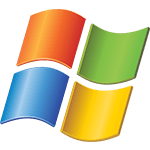
Windows XP
Developer: Microsoft
Windows XP was released to the public on October 25, 2001, the first two versions released by the company were Home and Professional. The Home version was targeted to home PC users, while the Professional version was designed for business and professionals. Prior to Windows 7 market dominance, Windows XP was the most widely used desktop operating system in the world for many years.
Windows XP has a lot of updates in the user interface (compared to Windows ME and 2000), making it easier to use and navigate through files and programs. The appearance of windows shell elements such as desktops, taskbar, start menu, get a better design with transparent icons and shadow drops. The Start menu gets two columns, and now it is completely customizable by the user. Windows Explorer also gets new features and changes, like task pane (useful file actions shown in the left hand sidebar), file thumbnails, sorting, grouping etc.
Windows XP includes performance improvements such as fast boot / logon / logoff, fast application launch, CPU simultaneous multithreading, new NTFS version NTFS v3.1 and so on.
Microsoft's developed multimedia applications have been updated and added more to the operating system, such as a new version of Windows Media Player, Windows Photo Viewer, and Movie Maker.
Three service packs have been issued for Windows XP, the first Service Pack 1 (SP1) was released in 2002, Service Pack 2 (SP2) was released on 2004, and Service Pack 3 (SP3) was released on 2008.
Windows XP Professional X64 is a edition, and the 64-bit version of the Windows XP operating system released publicly on April 25, 2005. The main advantage to use the 64-bit operating system is to allow 128 GB of RAM in PC, while the 32-bit OS can only support up to 4 GB RAM. Windows XP Professional X64 support WoW64, a Microsoft technology that allows 32-bit capable software applications to run on a 64-bit Windows operating system.
Features
- It is easy to use and navigate through files and programs.
- Lots of updates to the graphical user interface.
- Performance improvements.
- Windows Media Player.
- Windows Photo Viewer.
- Movie Maker.
- 64-bit version.
Facts
- Windows XP was the first consumer version of Windows not to be based on MS-DOS.
- Before the Windows 7 market dominance, Windows XP was the most widely used desktop operating system in the world for many years.